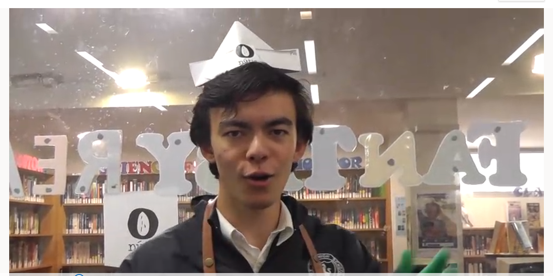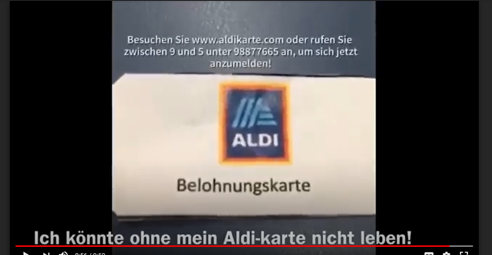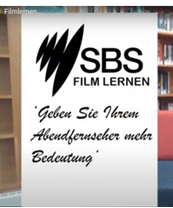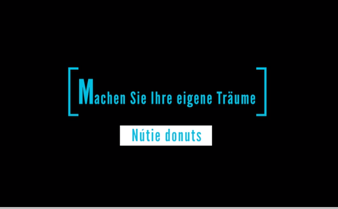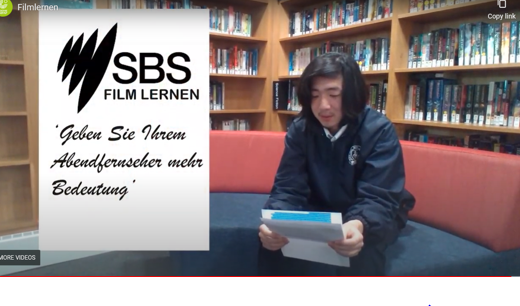Domains - Language

Learning at Home about Home
Being grounded at home has never been fun for anyone. But it was the perfect opportunity for German students in Year 8 to have a closer look at the everyday items they spent a lot more time with this term.
As part of the unit ‘My Home – Mein Zuhause’ students learnt to describe where they live and what their house or flat and rooms look like. They learnt the words for rooms and furniture in German and to describe where items are in a room. Some students were even brave enough to take their teacher and fellow students on a virtual tour through their house. This is an experience we could not have replicated in a regular classroom.
Making our home a learning space can be easy, learning the gender of German nouns not so much. Why is a table ‘masculine’, a bed ‘neuter’ and a lamp ‘feminine’? That is and will remain a very good question I cannot answer! As students have learnt this term, however, the gender of a noun is important when they try to build a sentence in German accurately.
Again, using the home environment could offer a simple solution. Students could help the whole family to learn vocabulary and grammar concepts in German. Students could write the names of rooms and furniture on individual sticky notes and attach them to the room or furniture in the house. Using colours like blue for masculine nouns, green for neuter nouns and red for feminine nouns will help learners to remember the gender of a German noun. Just walking past these sticky notes and consciously reading them a few times a day will help everyone in the house to remember them, especially interested siblings and parents. I call this ‘lazy learning’.
Short bursts of effort frequently also help to store the words better in our long-term memory. Sticky notes could be removed or reattached depending on how confidently a person can recall the word in German (including its gender). Involving the whole family also allows students to share their learning at home. Happy learning everyone!
Here are some sample texts of students describing their home.
Ich wohne in einem Einfamilienhaus. Ich mag mein Haus, weil es ruhig ist. Mein Haus hat vier Schlafzimmer. Ich mag mein Schlafzimmer, weil es ruhig ist. Mein Haus hat eine Küche und ich mag es, denn es ist praktisch.
Xuanyu Xiao, 8Z
Das ist mein Haus
Das ist mein Haus. Ich wohne in einem Einfamilienhaus. Mein Haus ist nicht groß, aber nicht klein. Ich mag mein Haus, denn es ist alt und modern. Ich mag mein Haus nicht, weil es kalt ist. In meinem Haus gibt es das Wohnzimer. Ich mag es, denn es gibt einen Fernseher und ein Sofa. Mein Haus hat mein Schlaferzimmer. Ich mag es, weil es meinen ist. Mein Haus hat auch einen Garten. Ich mag den Garten, denn es ist ruhig.
Jasmine Njoroge, 8G
Ich wohne in einem wohnung. Meine Wohnung ist warma und schön. Die Wohnung hat zwei Schlafzimmer, ein Badezimmer, der Balkon, ein Kuche, ein Esszimmer und Wohnzimmer. Das meine Sclafzimmer ist warm, ruhig und schön. Das Wohnzimmer ist klein und neu.
Anoushka Parida, 8G
Ich wohne in einem Haus. Ich mag mein Haus, denn es ist groß. Das Haus hat drei Schlafzimmer, zwei Badezimmer, die Küche und das Wohnzimmer. Ich mag mein Schlafzimmer. Es ist praktisch. Ich mag mein Wohnzimmer, weil es warm ist.
Ethan Chapman, 8Z
Ich wohne in einem Einfamilienhaus. Mein Haus ist schön und praktisch. Es hat drei Schlafzimmer, zwei Badezimmer, ein Wohnzimmer, einen kleinen Garten und eine Garage. Ich mag mein Haus, weil es klein und ordentlich ist. Ich mag mein Schlafzimmer, denn es ist groß und laut. Viele Autos fahren vorbei. Ich mag die Küche, denn der Geruch ist gut und es gibt leckeres Essen. Mein Garten ist nicht schön. Er ist gefüllt mit stacheligen Dornen. Ich mag meinen Garten nicht. Ich mag mein Haus und es ist voller Liebe.
Kaitlyn Jacob, 8D
Box Hill High School Year 10 students of German participated in this year’s Goethe Institute competition Enterprise German, where they learnt about German companies and their relationship with Australia. The project also required them to study one company in detail and create an innovative addition for that company’s product or service. The groups then created an advertising video for their innovative idea. Here are their ideas:
Team ‘sehr cool’ with Lucy Wallis, Thomas Blake and Jennifer Taylor
We chose the company Aldi and developed an Aldi rewards card. Shoppers can collect points when they shop in Aldi and these points can then be redeemed for products or services like packing, delivering etc.
Team ‘Roller’ with Brendan Hayes, James Wells and Andrew Zhou
Our Team chose SBS and developed a service for people to learn languages while watching foreign language movies. We developed colour-coded subtitles in English and the foreign language, worksheets and vocabulary lists for the interested SBS audience.
Team ‘keine Zeit’ with Dylan Hewitt-Perraud, Julian Bothroyd, Shinsei Takeda and Aidan Rockford-Win
We chose a donut company “Nutie” and as the innovative product promoted “Make your own donuts” with a variety of bases and toppings to suit each customer’s taste.
- Jana Kühn, Languages Domain Leader



